Terrestrial Test Patterns Used for Aerial Imaging
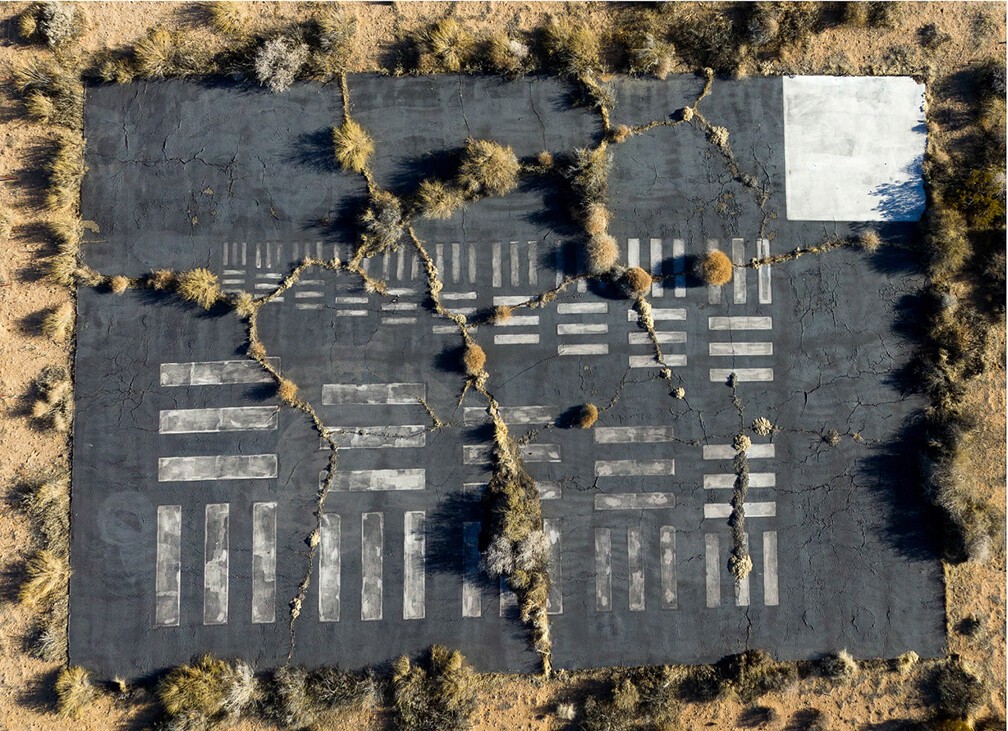
There are dozens of aerial photo calibration targets across the USA, curious land-based two-dimensional optical artifacts used for the development of aerial photography and aircraft. They were made mostly in the 1950s and 1960s, though some apparently later than that, and many are still in use, though their history is obscure.
Most of them follow the same general form established by the Air Force and NASA (and prior to 1958, its precursor agency, NACA): a concrete or asphalt pad constructed flat on the ground, 78 feet by 53 feet, coated in a heavy black and white paint. The pattern painted on the targets is sets of parallel and perpendicular bars duplicated at 15 or so different sizes, and, sometimes, a large white square. The configuration is sometimes referred to as a 5:1 aspect Tri-bar Array, and follows a similar relative scale as a common resolution test chart known as the 1951 USAF Resolving Power Test Target, conforming to milspec MIL-STD-150A. This test pattern is still widely used to determine the resolving power of microscopes, telescopes, cameras, and scanners.
The targets function like an eye chart at the optometrist, where the smallest group of bars that can be resolved marks the limit of the resolution for the optical instrument that is being used. For aerial photography, it provides a platform to test, calibrate, and focus aerial cameras traveling at different speeds and altitudes. The targets can also be used in the same way by satellites.
Many of these resolution test targets are found in the Mojave desert of California, one of the principal development and test areas for surveillance aircraft. of the most sophisticated aircraft made by the nation, like the A12 and SR-71 Blackbird and the U-2, were unarmed, and designed to be used only as flying cameras. The photo targets were most certainly used by these planes.
Cameras have been installed on many other types of aircraft of course, even the experimental rocket plane the X-15, which still holds the record for the fastest manned aircraft, and which flew over these skies in the 1950s carrying Fairchild and Hycon cameras that used these grids as well. Drones, flown extensively in the Mojave, were also developed as camera platforms, initially at least.
The largest concentration of calibration targets in one place is on the grounds of Edwards Air Force Base, in an area referred to as the photo resolution range, where 15 calibration targets run for 20 miles across the southeast side of the base in a line, so multiple targets can be photographed in one pass. There is some variation in the size and shape of the targets at Edwards, suggesting updates and modifications for specific programs. A number of the targets there also have aircraft hulks next to them, added to provide additional, realistic subjects for testing cameras. Some of these planes are themselves unusual and rare military jets, officially in the collection of the base museum, despite being left out on the range.
There are an unknown number of other isolated photo calibration targets across the country, mostly inside restricted groundspace at military areas, such as at Eglin AFB, Florida; the Nevada Test Site; around Walker Field, a Navy drone airport in Maryland; and an especially exotic one at Fort Huachuca, in Arizona. Several others are painted on existing taxiways and runways, such as at Wright Patterson AFB, Ohio; Travis AFB, California; Beaufort Marine Corps Base and Shaw Air Force Base in South Carolina.
There are other kinds of sites that have two dimensional targets used for testing and developing multi-spectral satellite and aircraft sensors in and beyond the visible spectrum range. At NASA’s Stennis Space Center in Mississippi, for example, there are painted concrete edge targets (which use larger solid black and white blocks), a 130-meter wide fan-shaped Painted Concrete Radial Edge Target, and 45 2.44-meter wide discs, evenly spaced throughout the site for calibrated viewing from above. Even 136 fixed manhole covers on site have been painted with reflective paint to bounce signals back from airborne sensors.
Though apparently still used for some optical camera testing and calibration, the standard tri-bar photo targets are definitely a thing primarily of the past. The 1951 Resolution Test Chart on which it is based is more than 60 years old and was designed for film cameras, and predates high-resolution digital systems and CCDs. The arrangement and spacing of the lines is not well suited for computer analysis (it's not a continuous single row, but two or three rows of pairs), and it has other frequency and modulation issues that make determining sharpness by digital means inaccurate. The Air Force officially cancelled MIL-STD-150A for photographic lenses in 2006, without replacement.
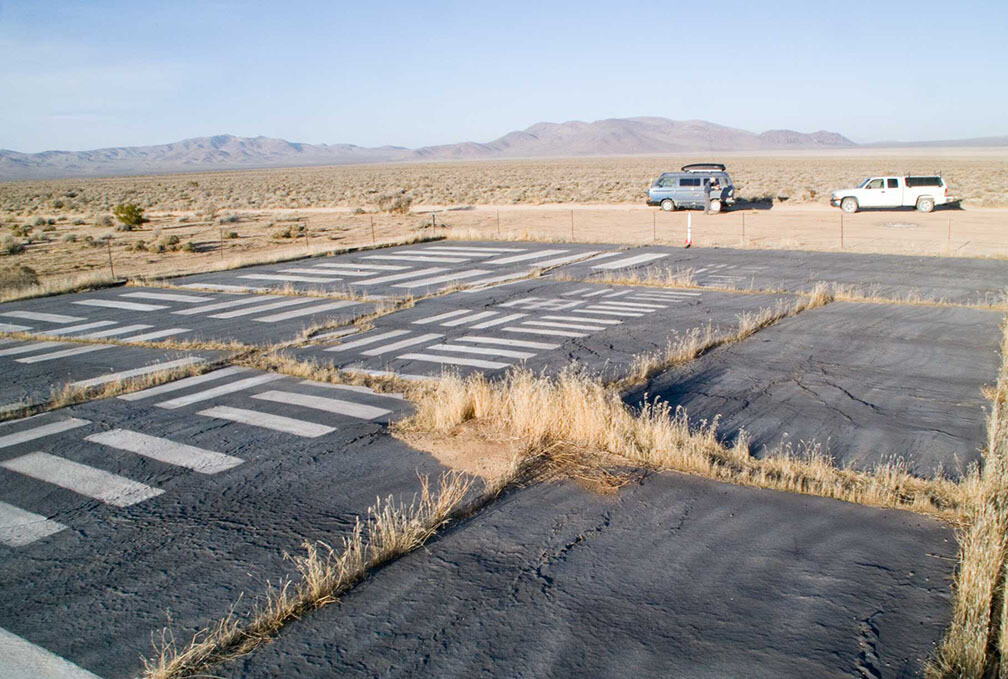
Three Tri-bar targets remaining at Cuddeback Lake are visual analog relics of the aerial viewing revolution, and they may be the only ones on public land. With dendritic cracks filling with brush, breaking through the uniformity of the 5:1 bars (each bar and space between the bars is five times as long as it is wide), the flat surfaces are peeling, crumbling and sprouting, producing dimensionality, and relief. CLUI photo.
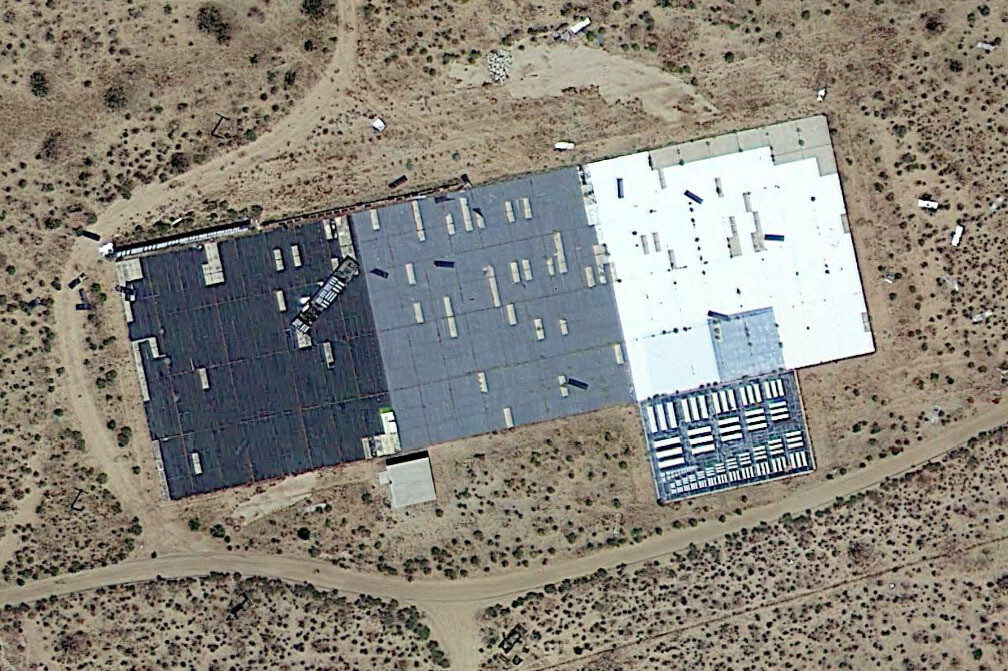
GoogleEarth image of a standard tri-bar test pattern on the Photo Resolution Range at Edwards that has been greatly expanded.
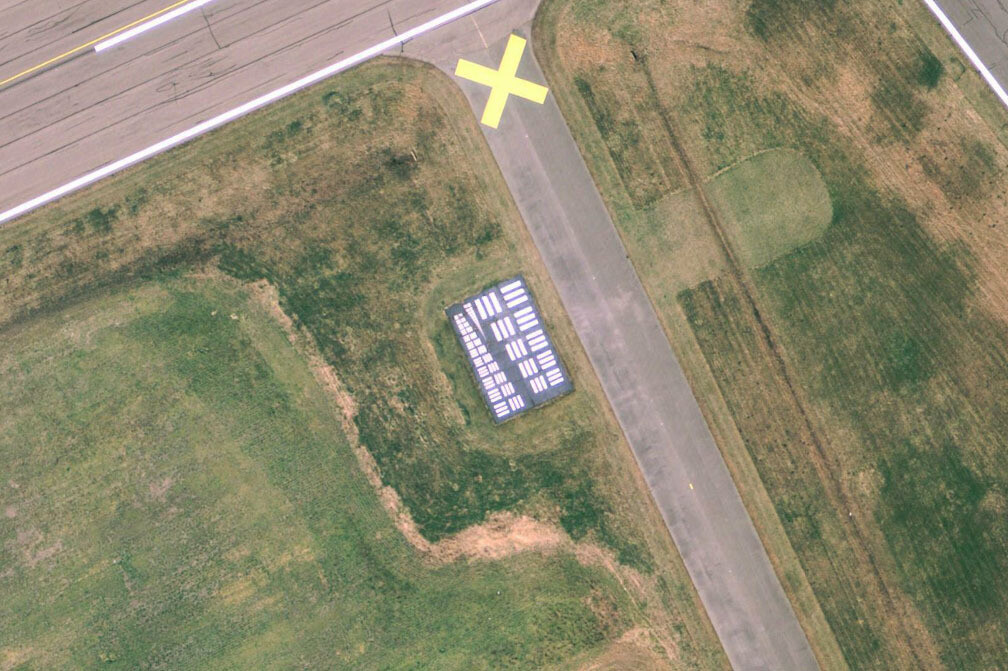
GoogleEarth image of a standard tri-bar test pattern off the runway at Walker Field, Maryland.
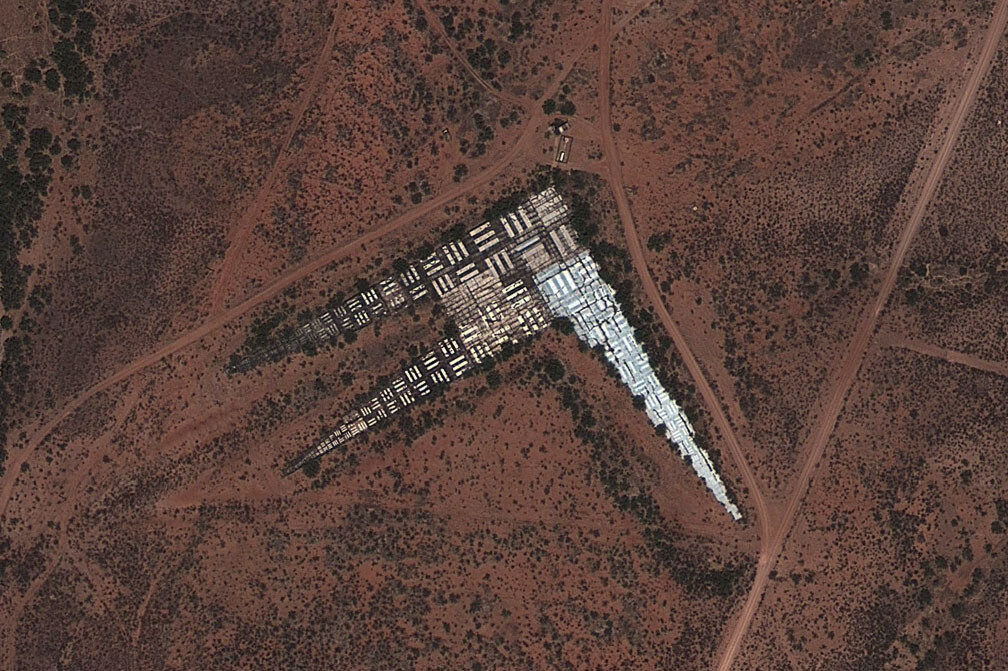
GoogleEarth image of an expanded tri-bar array at Fort Huachuca, Arizona.
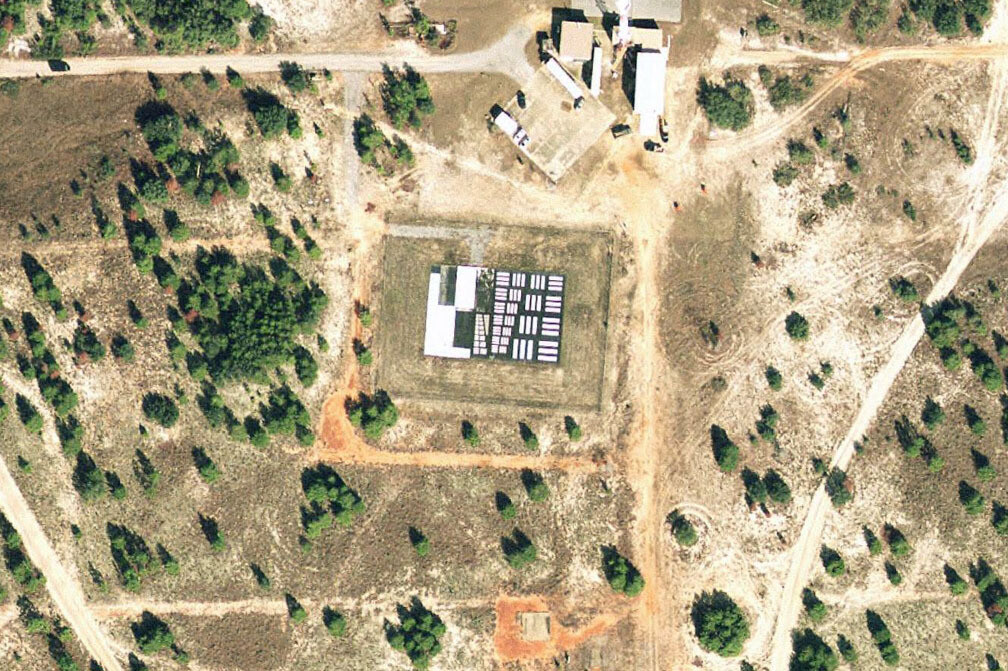
GoogleEarth image of a tri-bar array at Eglin Air Force Base, Florida.
Content on this page is licensed under an Attribution-Noncommercial-Share Alike 4.0 Creative Commons License.
